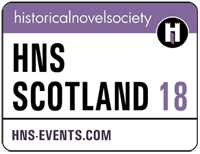I recently had the privilege of contributing a feature on researching historical fiction to the new Catherine Gaskin website. The full text may be found here; what follows is a taster…
The tools for research available to historical novelists have changed considerably over recent years with a wealth of data now available online and search engines making access to it appear relatively easy, but basic methods have changed little. Research still requires diligence and patience and the investigative skills of a detective, and Catherine Gaskin would have known all about that. Every author will have their own approach to accessing the information needed for writing historical fiction. Here’s a snapshot of how I go about it – at least for now!…

My desk showing some of my reference books. The file is one of many I keep on information of interest. It’s open at an article on smooth-bore cannon
I begin with the internet. Of course I still use reference books and libraries, but the internet has become the quickest and most direct way of gaining an overview of most subjects. It’s fast, although not very reliable; anyone can post anything on the web, and instances of mistakes appearing in Wikipedia are legion. So in researching my latest novel, ‘The Lost Duchess’, I moved rapidly from an internet trawl to the history books after my interest in the ‘Lost Colony’ of Roanoke was sparked by a reference in John Sugden’s biography of Sir Francis Drake (a book I read while researching my first novel). The internet pointed me to works of reference, and it gave me leads to ongoing investigations such as those conducted by The Lost Colony Center for Science and Research. While I was still in the midst of unravelling the history, the news broke of an intriguing discovery: a patch on a map in the British Library was found to conceal the icon of a fort – could this mark the spot where the ‘Lost Colonists’ had relocated? I decided I’d try to work that finding into my story as well – a good example of historical fiction keeping up with the latest findings!

John White’s ‘Virginea Pars’ map which was recently found to bear a hidden symbol
As a novelist I invent stories, but I always strive to begin as close to the known facts as possible. My story-writing fills in the gaps while the historical evidence provides the framework. For this I start with the first-hand accounts, as many as are extant and relevant, and I’ll read them in their original unmodernised form. I was fortunate to find most of the first-hand accounts relating to the Lost Colony compiled in ‘The First Colonists’ edited by DB and AM Quinn. This became my bible and was always on my desk. It contains Governor John White’s record of the 1587 expedition which endeavoured to establish the first permanent English colony in America. White kept this as a kind of diary and it’s the only first-hand account of the expedition that we have. I’ll confess to taking a particular delight in exciting episodes in history for which there are few records. The less that’s known for certain, the greater is my freedom to imagine!

Reconstructions Elizabethan style on the Island of Roanoke
The reference books may make the history accessible and put it in context, but they’ll always be interpretations. My story is yet another kind of interpretation which takes the primary sources as a starting point. I soon whittled down the non-fiction texts to a handful that were really useful to me, and Giles Milton’s ‘Big Chief Elizabeth’ was amongst the best of them. Just as important were two catalogues of paintings by John White with expert academic analysis of his work and its significance. Thanks to Amazon’s supply of second hand books, I was able to acquire most of the salient reference material and keep it ready to hand. So I have ‘A New World: England’s First View of America’ and ‘European Visions, American Voices’, both edited by Kim Sloan, the latter edition stamped with ‘Dawson UK Charity Book’. (Quite what will happen when all ex-library stock books are sold into private hands I don’t know – perhaps then everyone will have to rely on Project Gutenberg!)
The rest of the feature may be found here…


